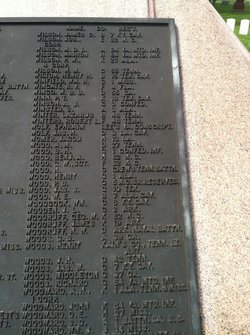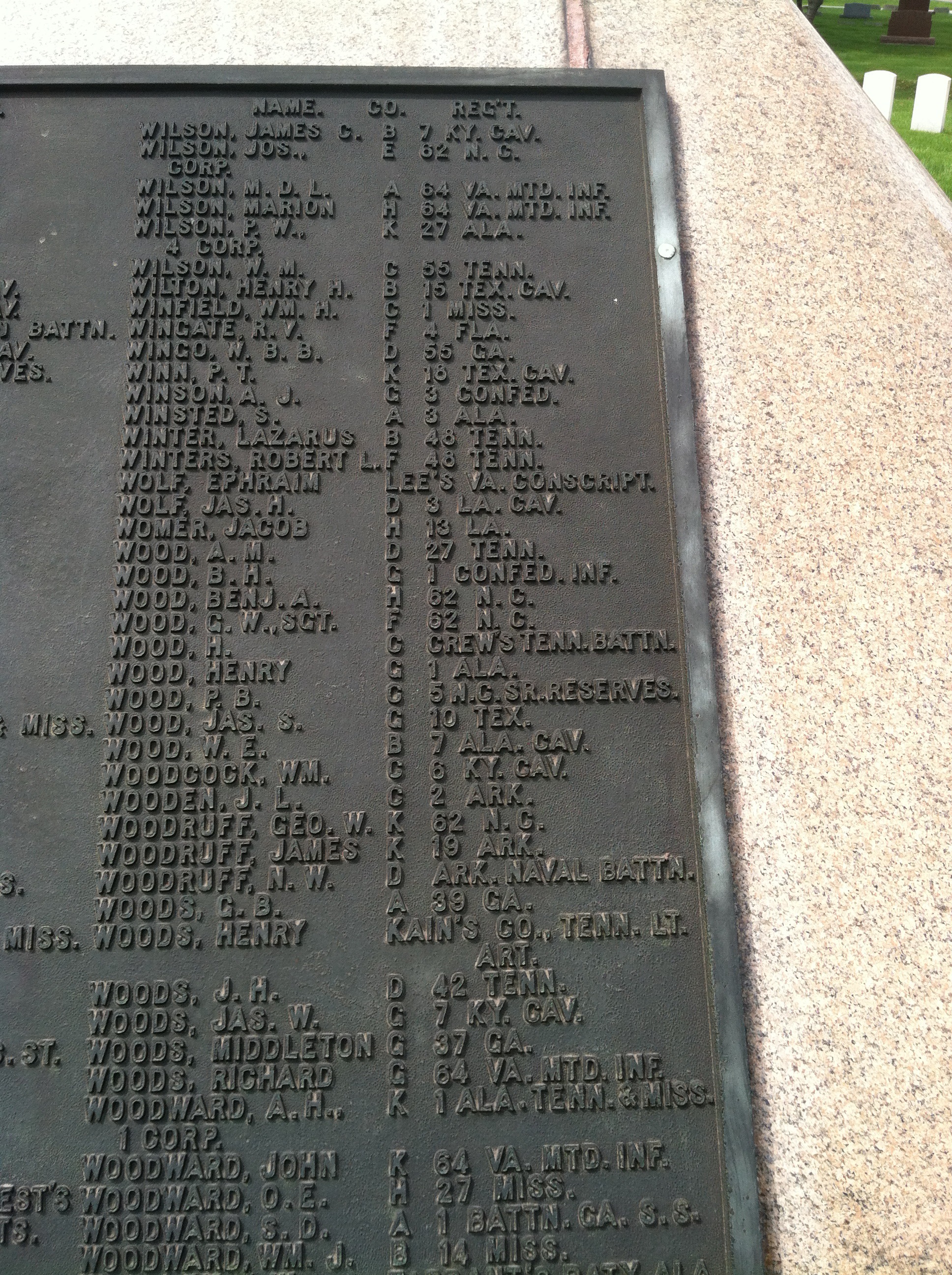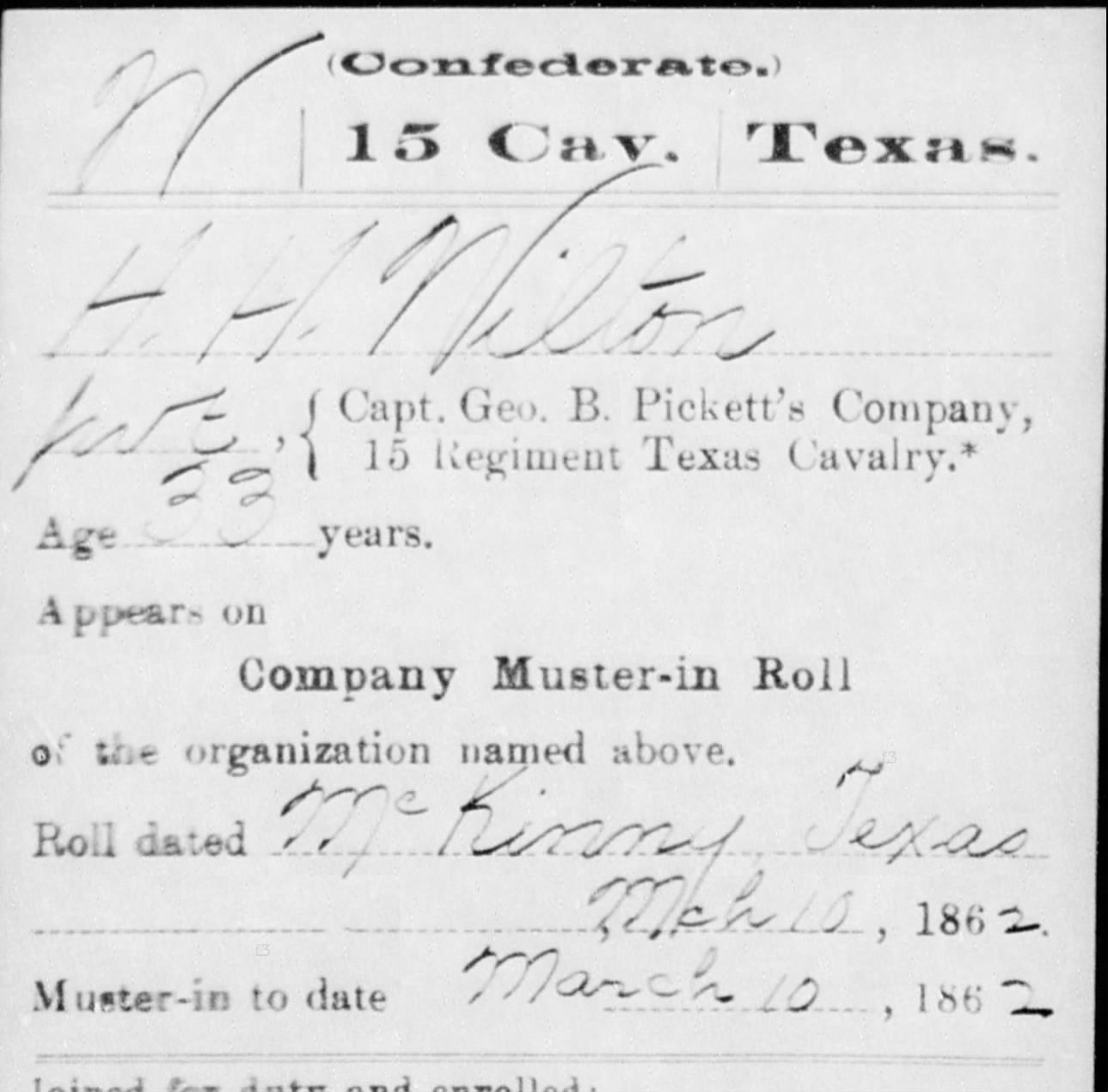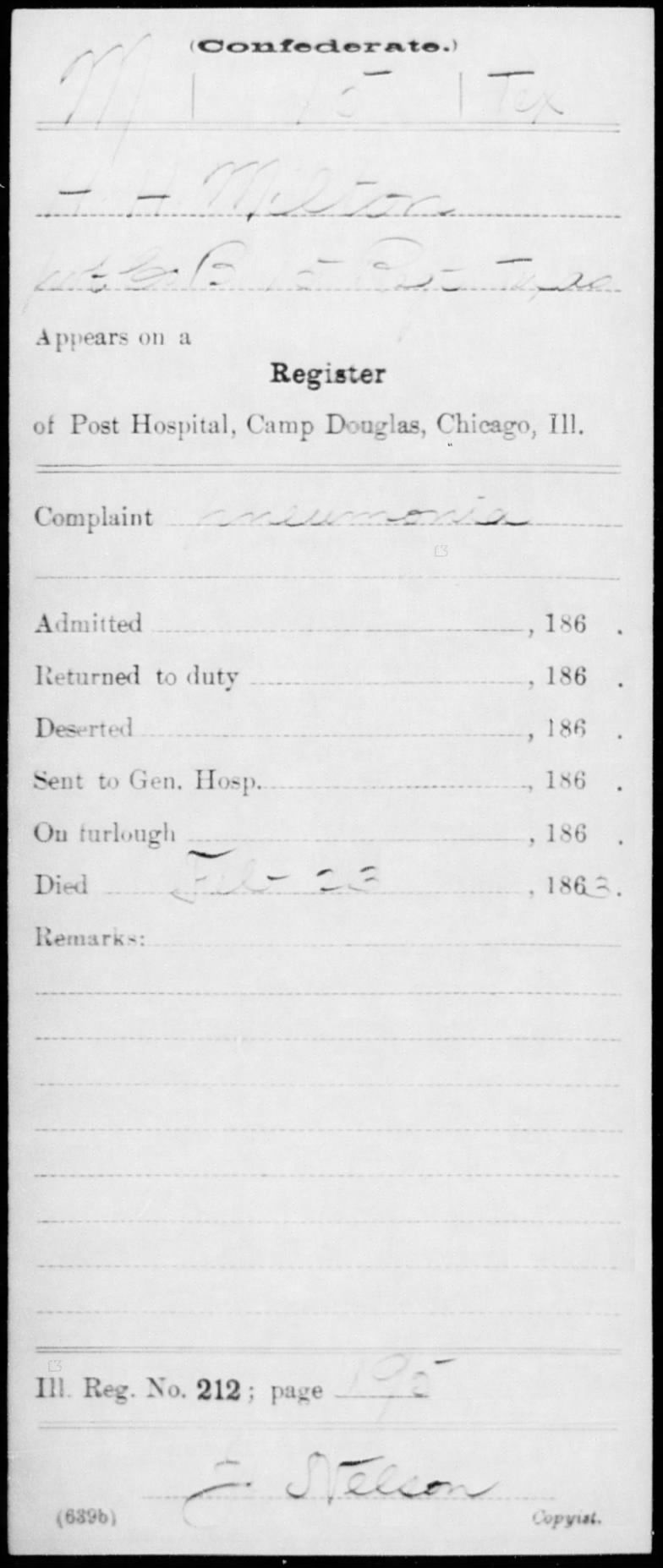Henry H. Wilton became a millwright by trade and followed that pursuit for some years. Following their marriage Mr. and Mrs. Wilton settled in Lamar County, where he owned and operated a mill (Paddock 229). They had three children, two of whom were born while they were residing in Lamar County, Henry Fullingim Wilton in August 1857 and George C. Wilton in March 1859.
Later, however, Henry sold his property in Lamar County and went north across the Red River into Choctaw Nation, where he built two mills (Paddock 229). In 1860 he returned to Wise County, Texas, where he pre-empted land five miles north of Decatur and improved a farm, building a house there for his family and following the carpenter's trade in connection with general agricultural pursuits.
During the following summer of 1861 H. H. Wilton enlisted as a member of the second company of Cavalry that had been newly organized by Colonel George B. Pickett (Cates 121-22). H. H. Wilton's brother-in-law, Jesse P. Fullingim, was also a member of this same company, along with 100 more men from Wise County. His war records show two different enlistment dates, January 2, 1862, and February 18, 1862. Consequently, it is not known whether Henry ever saw his baby daughter, Mary Jessie Wilton, who was born on January 30, 1862.
On March 10, 1862, the company was reorganized as the 15th Texas Cavalry, Company B, and while on a campaign in Arkansas in June of 1862, they engaged the Federals near Batesville. Six months later in early January of 1863 a division of Confederate troops, which by then consisted of three brigades—mainly Texans and numbering "not more than thirty-three hundred effective men," were garrisoned in Ft. Hindman at Arkansas Post under the command of Brigadier-General T. J. Churchill.
On Friday, the 9th of January, Gen. Churchill received a scouting report that a Federal gunboat had been seen on the Arkansas River about thirty miles down river from the Post. A few hours later another scout reported that he had seen other gunboats making their way up the river followed by transports. General Churchill ordered everything in readiness for an imminent attack. In the meantime the Federals had landed a force about two miles down river from the fort, "but they made no demonstration until about nine or ten o'clock the next morning, when they commenced shelling the fort from their advance gunboats that were cautiously and slowly feeling their way up the river" (Pollard 220).
The day of January 10th was spent in the Federals shelling the fort and the Confederates repositioning themselves in the surrounding woods and building new entrenchments and parapets. At 10 a.m. on Sunday, January 11th, the Federals renewed the attack with both gunboats and land forces. According to Cliff D. Cates (125), who would have learned about the battle firsthand from his great uncle Jesse P. Fullingim,"[a] sharp affray then took place at Arkansas Post on January 11, 1863, and 3,000 Confederate troops were forced to surrender to the Federal Army, among them being the Wise County company. Confinement followed later in the Federal detention post at Camp Chase, Columbus, Ohio, and later at Camp Douglas, Chicago, where two of the company, Allen Bryant and H. H. Wilton, died from exposures."
Union General W.T. Sherman reported that the number of Confederate dead must have been nearly one hundred and fifty. "…Of prisoners," he wrote, "by actual count, we secured four thousand seven hundred and ninety-two, and sent them north to St. Louis" (303).
Regardless of whether there were 3,000 Confederates captured or 4,792, as reported by Gen. Sherman, Martha's husband, H. H. Wilton, did indeed become a prisoner of war on January 11, 1863, and along with his other fellow Texas Confederate prisoners he was transported from St. Louis to Columbus, Ohio—more than likely by rail—and then on to the final destination of Chicago, Illinois. On Sunday, February 8, 1863, approximately one month after being captured, the names of H. H. Wilton and his brother-in-law, Corporal Jesse P. Fullingim, appeared on a "Roll of Prisoners of War" at Camp Douglas in Chicago.
Camp Douglas was a large instruction and recruitment camp, and the prison formed only a comparatively small part of the facility. It is no understatement to assert that the conditions at Camp Douglas were deplorable, as revealed in the following record.
"…The camp was on low ground, which was flooded with every rain, and during a considerable part of the winter was a sea of mud. The barracks were poor and conditions generally were unsanitary. President H. W. Bellows of the Sanitary Commission sa[id], June 30, 1862, speaking of the barracks, 'Nothing but fire can cleanse them,' and he urged the abandonment of the camp as a prison. The place was not abandoned, however; and in February, 1863, out of 3884 prisoners, 387 died. This mortality rate, almost exactly ten per cent for the month, was not reached in any month, in any other large prison during the war, so far as the 'Official Records' indicate (Miller 7: 68).
In view of the fact that H. H. Wilton died from "exposures" while at Camp Douglas, it is reasonable to assume that he died during this traumatic month of February 1863. The Roll of Prisoners of War states that he indeed died of pneumonia at the Post Hospital in Camp Douglas on February 23, 1863.
Henry H. Wilton became a millwright by trade and followed that pursuit for some years. Following their marriage Mr. and Mrs. Wilton settled in Lamar County, where he owned and operated a mill (Paddock 229). They had three children, two of whom were born while they were residing in Lamar County, Henry Fullingim Wilton in August 1857 and George C. Wilton in March 1859.
Later, however, Henry sold his property in Lamar County and went north across the Red River into Choctaw Nation, where he built two mills (Paddock 229). In 1860 he returned to Wise County, Texas, where he pre-empted land five miles north of Decatur and improved a farm, building a house there for his family and following the carpenter's trade in connection with general agricultural pursuits.
During the following summer of 1861 H. H. Wilton enlisted as a member of the second company of Cavalry that had been newly organized by Colonel George B. Pickett (Cates 121-22). H. H. Wilton's brother-in-law, Jesse P. Fullingim, was also a member of this same company, along with 100 more men from Wise County. His war records show two different enlistment dates, January 2, 1862, and February 18, 1862. Consequently, it is not known whether Henry ever saw his baby daughter, Mary Jessie Wilton, who was born on January 30, 1862.
On March 10, 1862, the company was reorganized as the 15th Texas Cavalry, Company B, and while on a campaign in Arkansas in June of 1862, they engaged the Federals near Batesville. Six months later in early January of 1863 a division of Confederate troops, which by then consisted of three brigades—mainly Texans and numbering "not more than thirty-three hundred effective men," were garrisoned in Ft. Hindman at Arkansas Post under the command of Brigadier-General T. J. Churchill.
On Friday, the 9th of January, Gen. Churchill received a scouting report that a Federal gunboat had been seen on the Arkansas River about thirty miles down river from the Post. A few hours later another scout reported that he had seen other gunboats making their way up the river followed by transports. General Churchill ordered everything in readiness for an imminent attack. In the meantime the Federals had landed a force about two miles down river from the fort, "but they made no demonstration until about nine or ten o'clock the next morning, when they commenced shelling the fort from their advance gunboats that were cautiously and slowly feeling their way up the river" (Pollard 220).
The day of January 10th was spent in the Federals shelling the fort and the Confederates repositioning themselves in the surrounding woods and building new entrenchments and parapets. At 10 a.m. on Sunday, January 11th, the Federals renewed the attack with both gunboats and land forces. According to Cliff D. Cates (125), who would have learned about the battle firsthand from his great uncle Jesse P. Fullingim,"[a] sharp affray then took place at Arkansas Post on January 11, 1863, and 3,000 Confederate troops were forced to surrender to the Federal Army, among them being the Wise County company. Confinement followed later in the Federal detention post at Camp Chase, Columbus, Ohio, and later at Camp Douglas, Chicago, where two of the company, Allen Bryant and H. H. Wilton, died from exposures."
Union General W.T. Sherman reported that the number of Confederate dead must have been nearly one hundred and fifty. "…Of prisoners," he wrote, "by actual count, we secured four thousand seven hundred and ninety-two, and sent them north to St. Louis" (303).
Regardless of whether there were 3,000 Confederates captured or 4,792, as reported by Gen. Sherman, Martha's husband, H. H. Wilton, did indeed become a prisoner of war on January 11, 1863, and along with his other fellow Texas Confederate prisoners he was transported from St. Louis to Columbus, Ohio—more than likely by rail—and then on to the final destination of Chicago, Illinois. On Sunday, February 8, 1863, approximately one month after being captured, the names of H. H. Wilton and his brother-in-law, Corporal Jesse P. Fullingim, appeared on a "Roll of Prisoners of War" at Camp Douglas in Chicago.
Camp Douglas was a large instruction and recruitment camp, and the prison formed only a comparatively small part of the facility. It is no understatement to assert that the conditions at Camp Douglas were deplorable, as revealed in the following record.
"…The camp was on low ground, which was flooded with every rain, and during a considerable part of the winter was a sea of mud. The barracks were poor and conditions generally were unsanitary. President H. W. Bellows of the Sanitary Commission sa[id], June 30, 1862, speaking of the barracks, 'Nothing but fire can cleanse them,' and he urged the abandonment of the camp as a prison. The place was not abandoned, however; and in February, 1863, out of 3884 prisoners, 387 died. This mortality rate, almost exactly ten per cent for the month, was not reached in any month, in any other large prison during the war, so far as the 'Official Records' indicate (Miller 7: 68).
In view of the fact that H. H. Wilton died from "exposures" while at Camp Douglas, it is reasonable to assume that he died during this traumatic month of February 1863. The Roll of Prisoners of War states that he indeed died of pneumonia at the Post Hospital in Camp Douglas on February 23, 1863.
Inscription
B 15 TEX. CAV.
Gravesite Details
Confederate Mound
Family Members
Advertisement
Explore more
Sponsored by Ancestry
Advertisement










